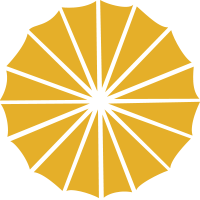Ho Chi Minh Mausoleum
The President Ho Chi Minh Mausoleum is a mausoleum which serves as the resting place of Vietnamese Revolutionary leader & President Ho Chi Minh in Hanoi, Vietnam. It is a large building located in the center of Ba Dinh Square, where Ho, Chairman of the Workers' Party of Vietnam from 1951 until his death in 1969, read the Declaration of Independence on 2 September 1945, establishing the Democratic Republic of Vietnam. It is open to the public.
Ho Chi Minh President
Ho Chi Minh President, also known as Uncle Ho (1890 - 1969), was a revolutionary and a founder of Communist Party of Vietnam. He was also one of Vietnamese leaders in the struggle for independence and freedom of the country. On September 02, 1945, he read the Vietnamese Declarations of Independence in front of thousands people in Ba Dinh Square announcing the birth of the Democratic Republic of Vietnam. Being widely admired and revered by not only Vietnamese people, but also people around the world, Uncle Ho left profound grieves when he passed. Many monuments and historical relics were built to commemorate the merits of this President such as Ho Chi Minh Mausoleum, Ho Chi Minh Museum, Ba Dinh Square, Presidential Palace Hanoi, Ho Chi Minh's Stilt House. These five monuments are located in a unified cluster of historic relics in Ba Dinh district, Hanoi capital.
Ho Chi Minh Mausoleum
Ho Chi Minh Mausoleum is situated in Hung Vuong Street, Ba Dinh district. The Mausoleum was officially started building on September 2, 1973 and inaugurated on August 29, 1975. The architecture of the Mausoleum is the combination between Lenin Mausoleum's architecture and distinct architectural elements of Vietnam. The building materials for construction were brought from different places in Vietnam including sands taken from Kim Boi stream (Hoa Binh province), boulders from streams in Son Duong, Chiem Hoa, Ngoi Thia, Tuyen Quang, stones from Thanh Hoa, Yen Bai, etc.
Ho Chi Minh Mausoleum consists of three layers with 21.6 meters high and 41.2 meter wide. The mausoleum's portico has the words "Chủ tịch Hồ Chí Minh" (President Ho Chi Minh) made from dark red jade stone of Cao Bang province. The lobby was tiled by red marble, which is the background of the words "Không có gì quý hơn độc lập tự do" (Nothing is more precious than Independence and Freedom), and the signature of Ho Chi Minh president. In the middle of the Mausoleum, the embalmed body of Ho Chi Minh is preserved in a glass coffin protected by four military honor guards.
With regard to landscapes surrounding the Mausoleum, there are two wildflowers in two sides of the front door. In the rear and the back of the Mausoleum, 79 cycas revoluta were grown symbolizing for 79 years in the life of Uncle Ho. In the south and the north of the Mausoleum, there are two ranges of bamboo, which are a symbol of Vietnam. In the front of the Mausoleum is Ba Dinh Square.
The Museum was launched on May 19, 1990 on the occasion of solemnly celebrating the 100th birthday of Uncle Ho. The monument aims to express the deep gratitude of Vietnamese people to the great contributions of their former President. Ho Chi Minh Museum is the largest museum in Vietnam. The Museum mainly focuses on displaying artifacts and documents about Ho Chi Minh's life and career.
The Museum was designed by a Russia designer, Garon Ixacovich. It has three floors with nearly 20 meters high and 30 meters long. It has the shape of an ethereal white lotus flower, which are reminiscent of Sen Village (Lotus Village), Ho Chi Minh's hometown. Next to the building, there is an artificial lake with a diameter of 18m making the scenes surrounding the Museum more vibrant.
There are three main contents displayed in Ho Chi Minh Museum. The opening part exhibits life and revolutionary career of Uncle Ho and implementation of Ho Chi Minh's Testament by Vietnamese people. The second part is the introduction of lives, battle, and victory of Vietnamese people in wars. The last one is the introduction of some events in the world's history that made a great impact on life and career of Ho Chi Minh and Vietnam revolution.
Ho Chi Minh Museum is a research center introducing about the life of a great man, who devoted all his life to the cause of national liberation and human liberation. Since its inauguration, the number of visitors has been growing significantly. Especially, on weekends and holidays, there are great deal of people visiting the Museum. In some days, the number reached 2,000 people per day. It shows the fact that the Museum is not only an architecture having the national stature but also the crystallization between the cultural traditions and the deep gratitude to Ho Chi Minh President. The Museum opens at 8.00 am in all morning apart from Monday and Friday.




